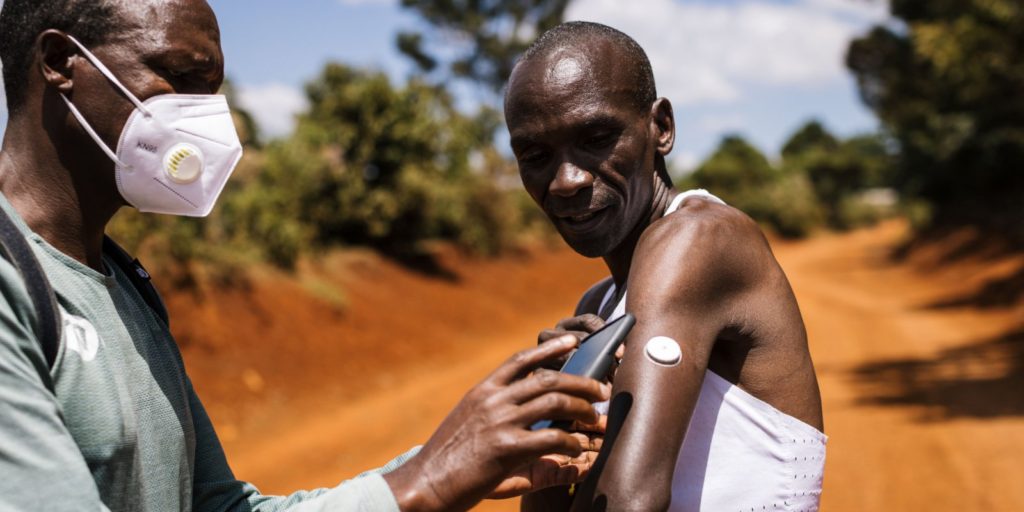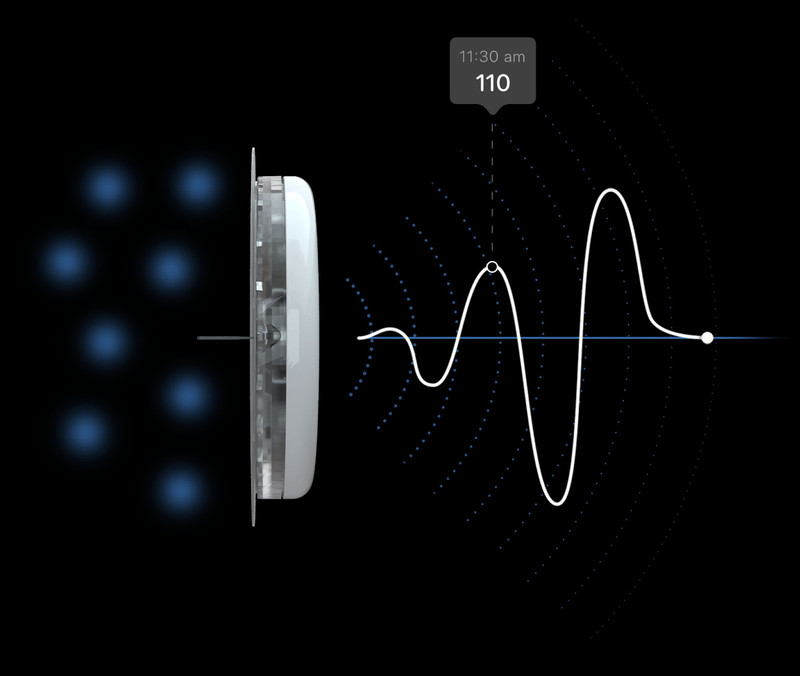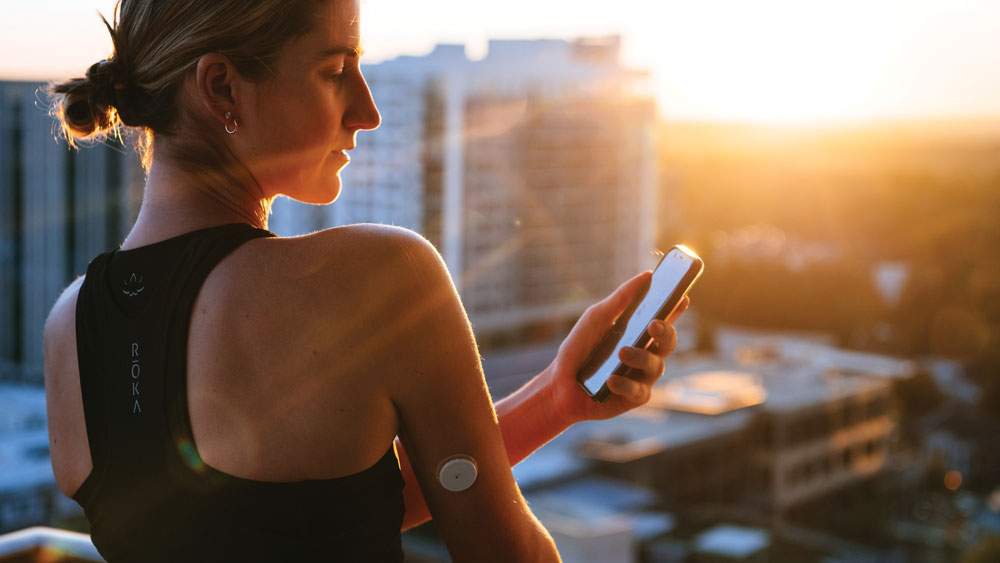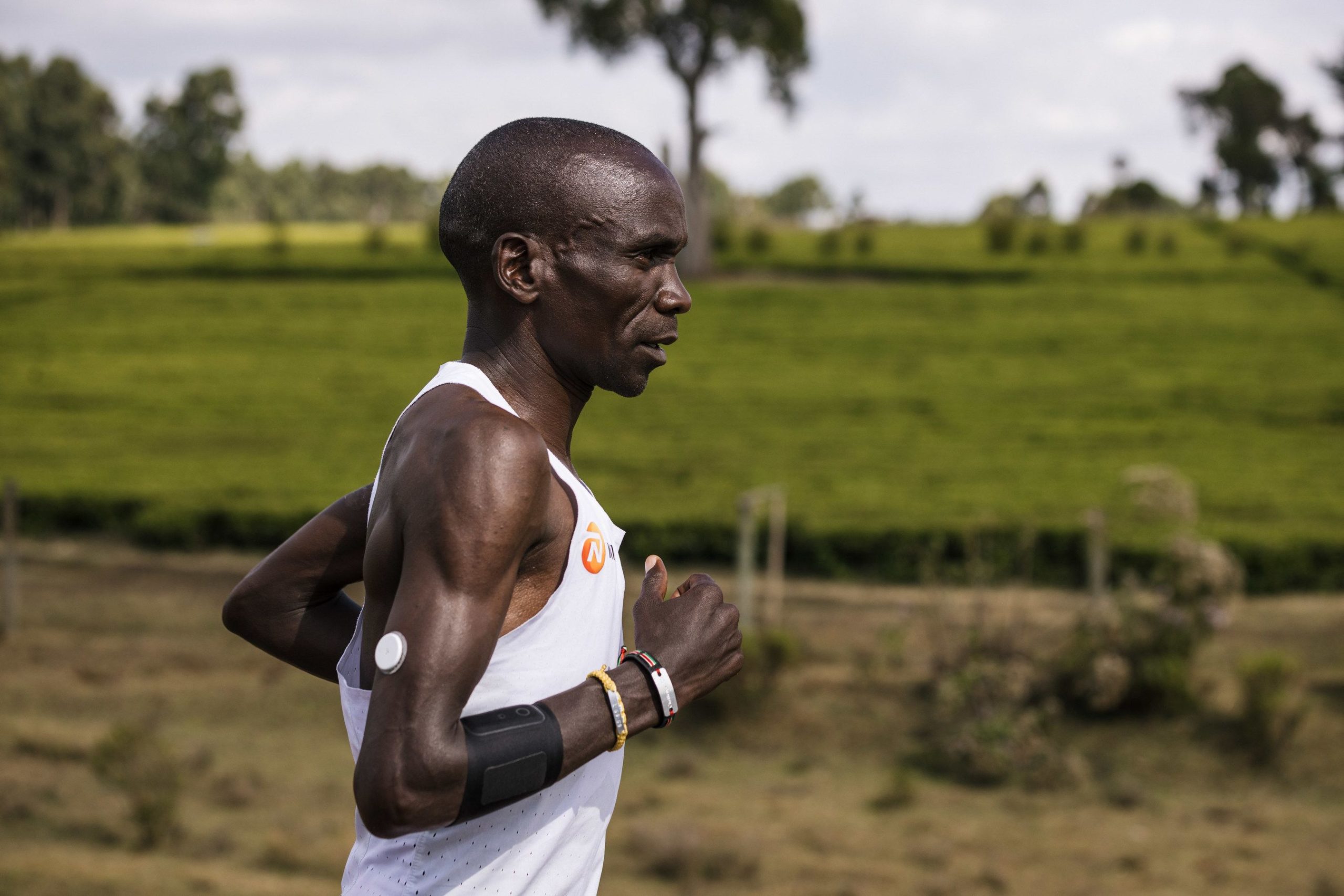Glucose Sport Biosensor: The Best Innovations for Runners
When Eliud Kipchoge, a Kenyan marathon world record holder, ran a marathon in Twente, Netherlands this year, attentive spectators could notice a three-inch small round biosensor shining on his right upper arm. The Olympic winner became one of the first professionals who started to experiment with a new piece of glucose sensing technology. A first Glucose Sport Biosensor.
The latest from continuous glucose monitoring systems, the Abbott’s Libre Sense Glucose Sport Biosensor was introduced by its manufacturer in September 2020 and has already been used by multiple road cyclists. Riders from the Jumbo Visma and Ineos teams experimented with it as well during the last Tour de France.
Abbott’s Libre Sense Glucose Sport Biosensor
Glucose Sport Biosensor is a device that monitors real-time glucose values in the body providing the body’s molecular glucose data and turning them into meaningful insights for athletes and coaches.
Until recently, this breakthrough sensing technology collecting glucose data was only used by diabetics. This time, however, the manufacturer decided to use the same proven technology on top athletes without any health issues.
The Libre Sense Glucose Sport Biosensor was introduced by American company Abbott that has long focused on the production of diagnostic medical devices.

Eliud Kipchoge
You would hardly be looking for a better and more successful runner than Eliud Kipchoge in all history of marathons.
The Kenyan turned 14 marathon starts into 12 victories, won the Olympics and significantly improved the world record. Also, he was the first on the planet to run a marathon in less than two hours in simulated conditions.
Several running innovations contributed to his exceptional performance. Kipchoge got widely known for being ahead of the competition when it comes to technology.
Kipchoge as a leader in running innovations
He was the man who started the revolution in running by wearing shoes with carbon soles. After that, he upgraded them by attaching a device that measured running power in watts.
Similar smart devices measuring advanced running stats are now very popular among many recreational runners.
In recent days, Kipchoge has introduced another component to its innovation portfolio – a white ring on the back of the arm measuring glucose levels and streaming glucose data to compatible mobile apps.
How does Glucose Sport Biosensor work?
Abbott’s Libre Sense Biosensor contains a thin fiber which when glued to the back of the arm, gets under the skin and monitors the so-called interstitial fluid. Thanks to the fiber, the device regularly measures the level of glucose in the body.
The biosensor then sends data via Bluetooth to the mobile app on the user’s smartphone. And it can record specific values with a minute periodicity!

When low glucose levels are detected, the circle biosensor unit informs the runner. As a result, he may quickly decide on a personalized glucose response – an optimal carbohydrate intake based on his individual needs. To sustain peak performance, it is absolutely crucial to keep a stable glucose level.
Thanks to this innovation, the athlete will get a detailed picture of changes in blood sugar levels during endurance exercise. It will help him not only to reach his athletic performance goals but to ultimately improve health.
The glucose-related specific behavior of the organism
More and more users worldwide continuously measure glucose to better understand how glucose molecules actually behave. Glucose monitoring becomes a trend. Research made in sport and health sciences tells us more about it.
Under normal conditions, the human body tends to build up glucose stores to be ready for potential energy expenditure. In addition, as soon as we start exercising, we expose the body to a stress response, to which the body responds by further increasing glucose. However, this effect does not last long.
Later in the activity – especially long-term, when glycogen stores get depleted, glucose begins to fall. This is especially important in endurance sports, “explains Jim McCarter, CEO of Abbott.
Glucose Sport Biosensor advantages for runners
Thanks to the Glucose Sport Biosensor, the athlete is able to monitor how quickly his glucose reserves are depleted during exercise. This may provide meaningful insights to him. Based on that he is able to plan their replenishment more accurately. He can also make sure to be more “pre-supplied” so that he can start with the most efficient energy balance possible.
“Knowing and understanding glucose levels in real-time can help athletes to make proper nutrition choices improving their muscle recovery” adds McCarter. Several studies confirm these findings.
According to the manufacturer, the Abbott Libre Sense Glucose Sport Biosensor was also positively evaluated by cyclists at the Tour de France. They were able to accurately time their food intake and therefore maintain peak performance during the stage.
What Kipchoge says about it
Eliud Kipchoge is the first top runner to announce a partnership with a new equipment manufacturer. He explains more in the promotional video.
“I’ll learn how my glucose levels relate to my running performance. I’m already seeing how quick small adjustments can make a big difference.”
“The world of the marathon is advancing and the knowledge of glucose in the body can play an important role,”
Kipchoge already used Glucose Sport Biosensor in preparation for the marathon in Twente, the Netherlands. By the way, he won the marathon with a time of 2:04:30.
Designed for professionals
This fresh new glucose technology seems that it can be a useful tool for professionals.
It would not be a surprise if we see dozens of elite runners with such a glucose monitoring sensor in a few years at the start of the marathon. For top runners, who care about every second, the composition of nutrition and the right timing of energy intake is really important.
Thanks to the Glucose Sport Biosensor, athletes and their coaches can more easily recognize how the body uses sugar in endurance activity and when supplies are depleted.

What about recreational runners?
However, the correct level of glucose in the blood is only one of many parameters of running performance. On top of that, the data obtained from these medical devices must be consulted with an expert which makes it difficult to use by the average runner.
We believe that for most average runners, it is more efficient to fuel appropriately and focus on well-designed training. To measure glucose is not the most important factor that will make you a better runner. It is the food that you eat and the quality of the training that you do.
We absolutely advise you data-based approach to running though. While you should definitely measure your running data, you hardly need such an advanced piece of glucose monitoring. Rather choose from one of the quality wearable devices that will give you plenty of advanced running statistics and insights.
If you are looking for more inspiration on how to improve your nutrition choices, read this recent article about Spirulina and its benefits for running performance. Nutrition is the key!

